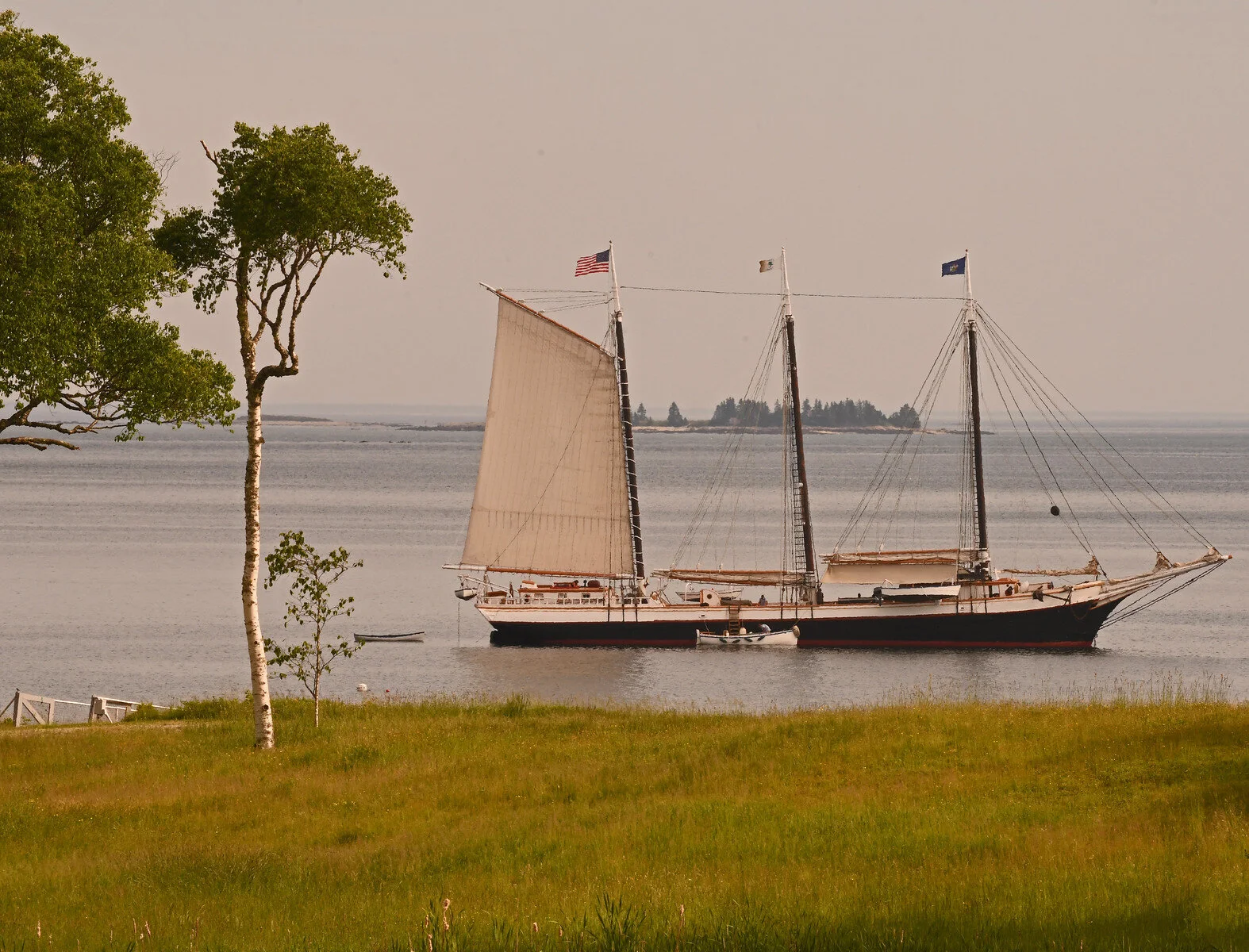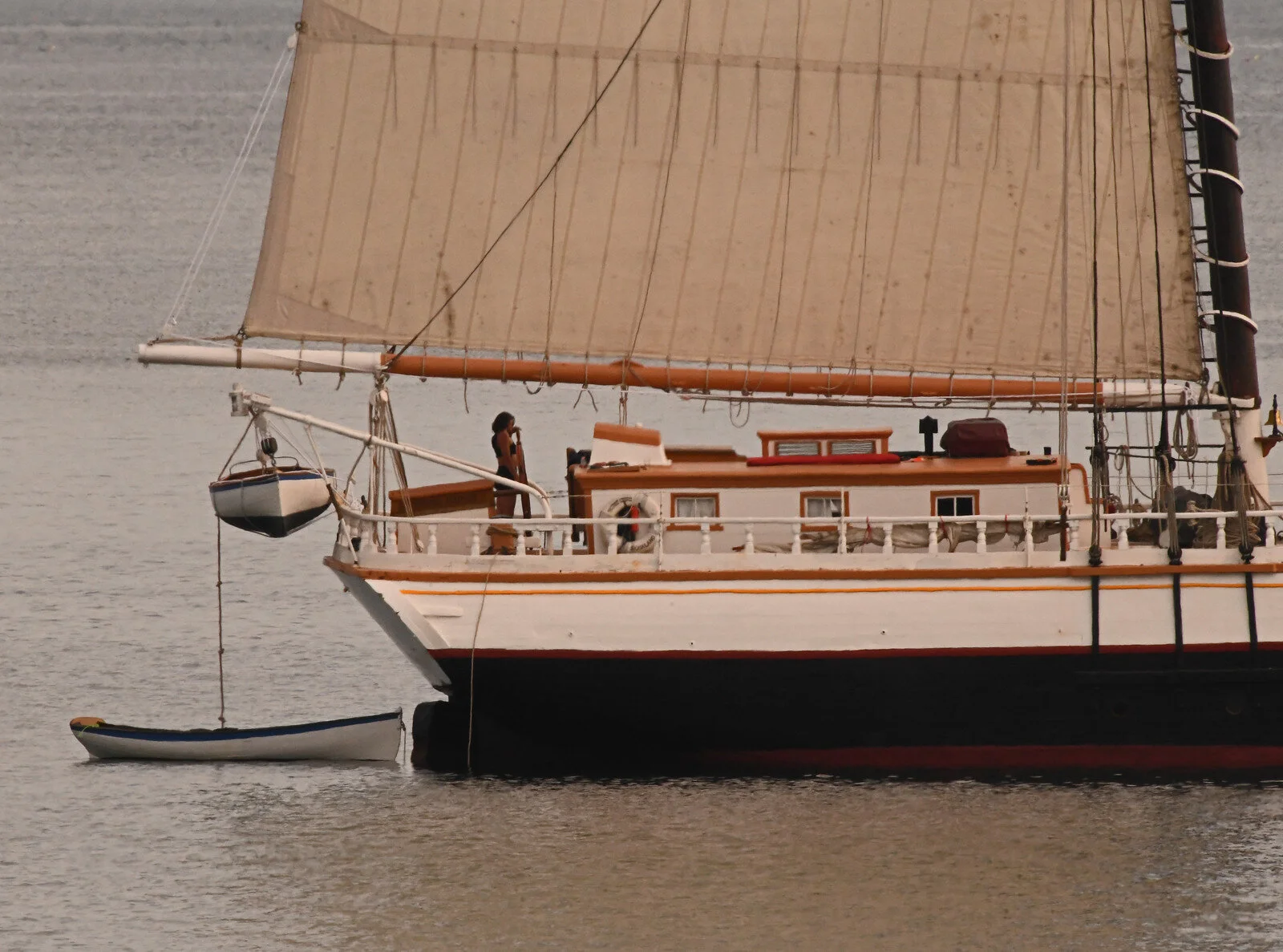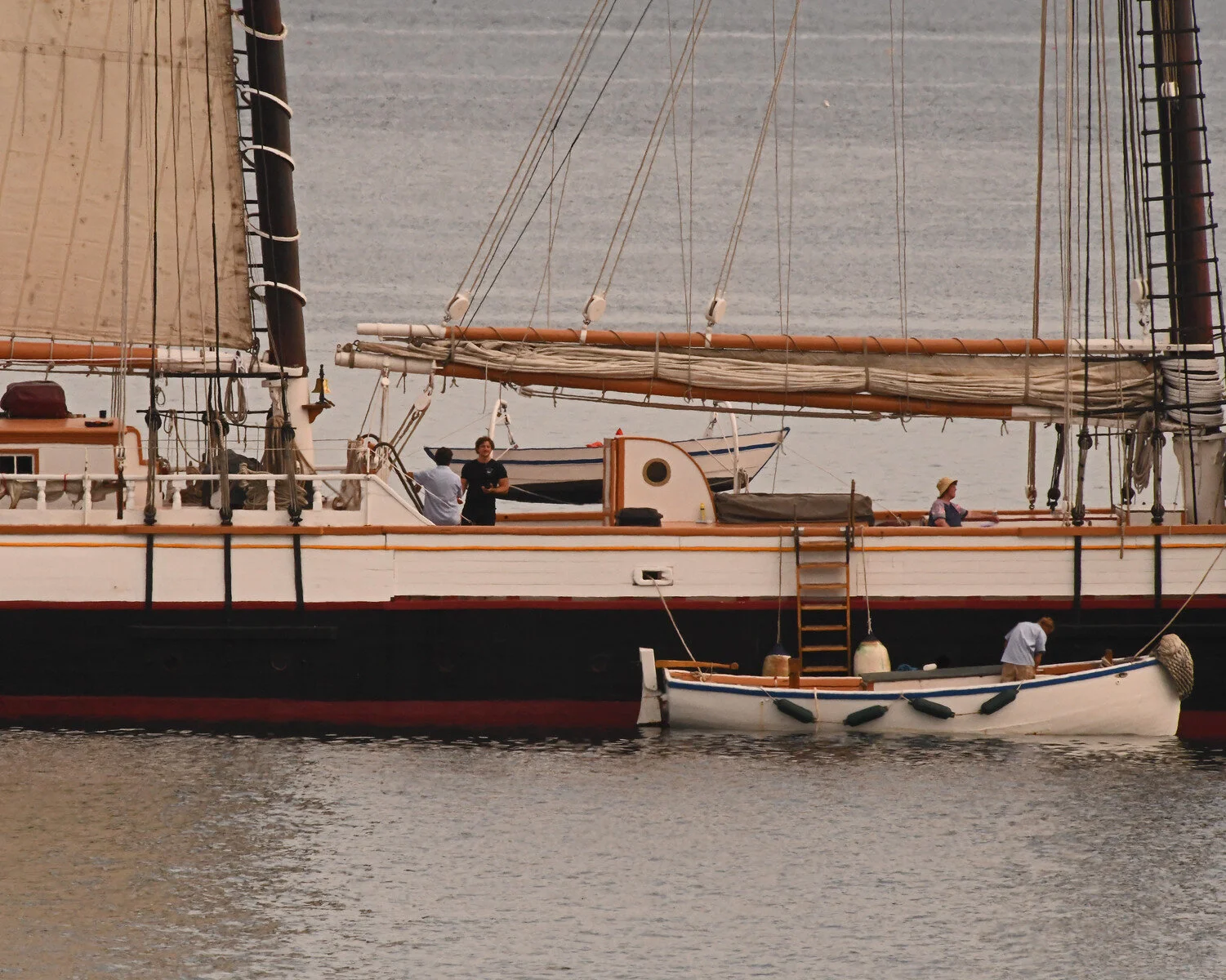Here, we see the morning light reach the Coastal Schooner Stephen Taber in Great Cove yesterday. She spent the night there in the shelter of Babson Island. Some of the passengers were still eating a sumptuous breakfast, others were preparing to try the cool water before the vessel moved out.
A few passengers climbed high into the rigging and leapt into the cool water, others chose paddle-boarding. before anchor was weighed:
Unfortunately, there was virtually no wind early yesterday, so the Taber was pushed out of the Cove by her powerful yawl boat Babe without raising sail.
The 110-foot Taber was built in 1871 and is a National Historic Landmark that now hails from Rockland, Maine. As with many 19th Century cargo cruisers, she was built with a flat bottom to “ground out” and discharge her cargo without the need for a pier. She does have a centerboard to lower during cruising but has no motor.
We cannot leave without remembering how spectacular she is under full sail, so we show you an archive image of the Taber coming into the Cove “with everything up” at a prior time:
Leighton Archive Image
The Schooner J&E Riggin also overnighted and likely will be the subject of a separate post tomorrow. (Brooklin, Maine)





































































































